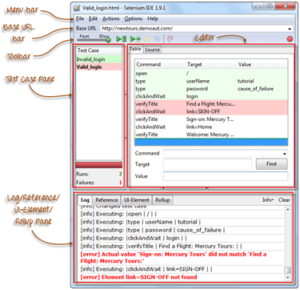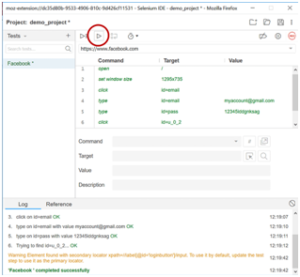In the development and success of the application, testing plays a vital role as it ensures quality, security, performance, and functionality.
Testing allows the examination of the issues and fixes the bugs in the code before it is launched in the marketplace. In addition, testing the application also helps in verifying the working of the application in different operating systems and browsers.
Testing is mainly done through two means: manual and automation. In manual testing, the test cases are executed manually without the use of any automation tools, while automation testing is done through the use of automation testing tools for the execution of the test case suite.
Nowadays and in the coming times, automation testing is gaining popularity due to wide test coverage and faster testing. Selenium automation testing is a popular tool for automation testing and is used by millions of business and software developers to ensure the quality of the software.
The present blog will highlight a detailed guide on Selenium automation testing, which will give ample information for you to get started with automation testing.
Introduction to Selenium
Selenium is an open-source testing tool that allows web application testing, due to which it has become the most accepted tool for professionals.
It is a tool that offers a tester to write the test script in different programming languages for functional testing of the web application. It runs in different browsers and operating systems; thus, making it widely applicable to different types of testing requirements.
Selenium automation testing
In simple words, automating testing done through the use of Selenium is known as Selenium automation testing. It is only applicable in testing web applications; however, desktop and mobile applications cannot be tested.
With Selenium automation testing, there is no licensing cost involved which makes it superior to the other automation testing tools.
Selenium automation testing can be done in different languages, which include Java, Python, C#, PHP, Ruby, Perl, and .Net.
It supports any of the following operating systems- Windows, Mac, or Linux. Browsers like Mozilla Firefox, Internet Explorer, Google Chrome, Safari, or Opera can be used for Selenium automation testing.
Selenium automation testing is integrated with TestNG and Junit for the management of test cases and the formation of reports. To acquire continuous testing, Selenium automation testing is also integrated with Maven, Jenkins, and Docker.
Now, the below section will give a detailed guide on Selenium automation testing.
Components of Selenium automating testing
Selenium automation testing uses three major components of the Selenium tool, which provide diverse features that support multiple operating systems and allow parallel test capabilities. Below are the components of Selenium.
Selenium IDE (Selenium Integrated Development Environment)
It is a record and playback type of tool and is available as a Firefox or Chrome plugin for the quick creation of test cases. These are created by interactions made in the web browsers with the user and recording it. Such cases can be played multiple times. It can be exported in different programming languages like Java, Ruby, and Python. Thus, it eases its use and allows the running of automation quickly.
Advantages:
- The positive point of Selenium IDE is that it has a built-in debugger that ensures troubleshooting of the tests.
- Test scripts can be reused
Gives provision for control flow statements

Image Source: www.guru99.com
Selenium WebDriver
It is an open-source tool that directs the communication between the browser and code. In different to IDE, Selenium WebDriver facilitate the creation and execution of test cases by the programming interface.
It is upgraded to Selenium RC for faster working of Selenium automation testing. With Selenium WebDriver, the writing of test cases is done in a way that involves the identification of the web elements on web pages and the performance of an action on such elements.
Advantages:
- Available for a plethora of programming languages like JAVA, C#, PHP, Ruby, Perl, Python, and .Net.
- Can capture screenshots for the tests.
- It supports testing in different browsers like Firefox, Chrome, IE, Safari
It integrates with frameworks like TestNG and Junit for effective management of Selenium automation testing.

Image Source: www.simplilearn.com
Selenium Grid
It is utilized for parallel testing and supports distributive testing. In other words, with Selenium Grid, the execution of multiple test scripts can be done at the same time on different machines. With the help of Hub-Node architecture, Selenium Grid is able to have parallel execution of tests.
For example, Hub’s role can be assumed by one machine (server) while the other is a node. The test scripts running on different browsers are controlled by Hub inside different operating systems. Such test scripts are written in different nodes which support different programming languages.

Image Source: www.edureka.co
Advantages:
- It can work with Selenium WebDriver
- Distributes tests across different machines and virtual machines.
- Scaling of test automation is done quickly.
- Can connect servers to multiple remote machines for running browser automation scripts in different operating systems and browsers.
It is challenging to maintain the Selenium Grid with all operating systems and browsers. LambdaTest is the cloud-based automating testing platform that provides an online Selenium Grid which can be accessed to run Selenium automation scripts. It has above 3000 browser environments over which tests can be run and automated cross-browser testing.
Why use Selenium automation testing?
There are several reasons which give you a guide on why you should use Selenium for automation testing. Some of them are highlighted below:
- It allows faster cross-browser testing.
- Supports different programming languages like Perl, Ruby, C#, PHP, JavaScript, Scala
- Supports multiple operating systems like Chrome, Firefox, IE, Safari, Opera, HTMLUnit, PhantomJS, etc.
- It can be integrated with CI/CD Pipeline.
- Generates quicker ROI
- Bugs can be found at an early stage
Who can use Selenium automation testing?
The testers mainly do Selenium automation testing, which is widely used in the web development domain. Businesses running online via web applications or websites have Selenium tools in their testing workflow.
As it is compatible with different languages and operating system, the DevOps team also integrate Selenium in their CI/CD tools to have browser automation testing.
Selenium automation testing and its types
Selenium automation testing involves different types of testing across various web browsers. Some of the common types of testing performed by Selenium are as follows:
- Selenium UI testing: It offers open-source UI test automation where visual elements of the application can be tested to verify the function and performance as expected.
- End-to-end testing: It tests the performance and function of the web application from start to finish. It finds the bugs which might arise from the correlation between the multiple components.
- Cross-browser testing: Selenium automation testing involves comparison and analysis of the behavior of the web application in different browser environments. Such testing is widely done with the use of Selenium Grid by LambdaTest.
- Database testing: Selenium automation testing supports database testing with the use of SQL commands.
- Unit Tests: It validates the single unit of code function as expected. For this, the test case is created and run in the Selenium WebDriver. The Unit Test runs automatically, and the tester can examine its behavior.
- Functional Tests: It validates the functionality of an entire web application and finds bugs in all functional components. Such tests must be written for each functional module in the application.
- Black Box Testing: Selenium automation testing performs black box testing to check the compliance of the system as per specific requirements.
- Integration Tests: These test the integration of the diverse part of the web application. It finds the bug from the application that emerges due to the integration of multiple components.
Way to perform Selenium automation testing
Following are the steps that are taken for performing Selenium automation testing.
Working on Selenium automation testing
Selenium automation testing works by imitating the action of the user. Action for a user to take is specified while writing the Selenium test and executed automatically on the browser. For example, suppose you want to test the login functionality of the application.
In that case, you need to write the Selenium test by entering the password and login ID in the correct field and clicking on the login button. Selenium will execute the test of such actions automatically on the browser and report any bugs if present.
To get started with Selenium automation testing, you need to install Selenium WebDriver, which enables you to run Selenium tests on different browsers and operating systems. Follow these steps to install Selenium:
- Visit the Selenium website: https://www.selenium.dev/
- Download it.
- Selenium IDE” option should be selected, and choose the browser
- Click on the download button
- Run the Selenium IDE0.0exe” file or other builds
- Install Selenium IDE
- Selenium tests can now be written, which should be concise and able to fix bugs.
- On running the tests in different browsers and operating systems, Selenium Grid is needed.
Lambdatest provides a cloud Selenium Grid with zero downtime, and initial Selenium automation testing minutes are on them with just a free sign-up. You can visit Selenium Tutorials to get a better idea.
Factor affecting test estimation of Selenium automation testing
Some factors that impact and need to be considered for the estimation of the Selenium automation testing are highlighted below.
- Scope of the project
- Utilization of supporting tools
- Coding and review
- Application complexity
Selenium automation testing supports the agile development method.
The agile testing process focuses on the improvisation of the product by dividing the project into small modules. In simple words, for any product, there is the addition of new features through release cycles, and it requires testing after each reiteration to ensure its function.
It indicates the requirement for continuous feedback and eliminating errors at the initial stage. However, for the agile tester, it sometimes becomes difficult to execute tests for each new requirement and check the regression defects.
The Selenium automation testing automates the web browser application that helps the agile tester to perform the test for repeated test scripts to come up with new critical situations. Selenium automation testing speeds the test execution process and tends to improve their performance.
Selenium automation testing is used in the following way by agile development:
- On the addition of new code to the application, existing features work as expected.
- Before being released to production, the tester should verify the working of the new features.
Conclusion
Selenium automation testing is a widely used approach for testing web applications. It is open source, supports different languages, operating systems, and browsers, and is integrated with different platforms. Thus, this makes it appropriate for web application testing. The present blog has given a detailed insight into Selenium automation testing, which will help you get started.





